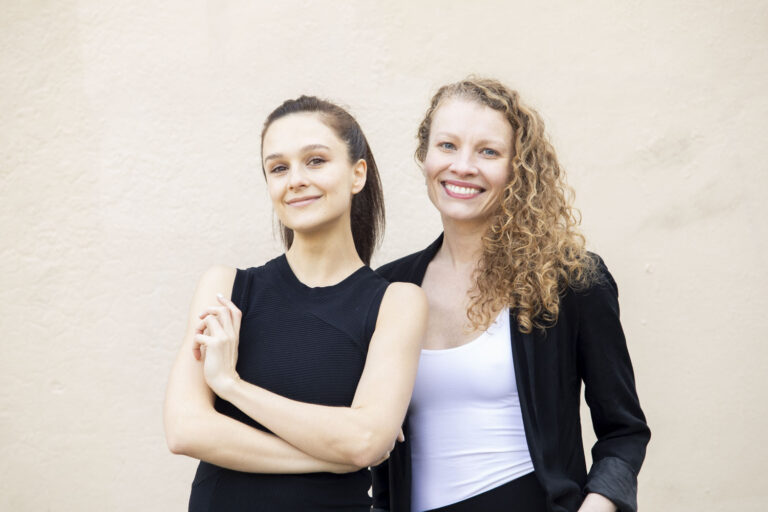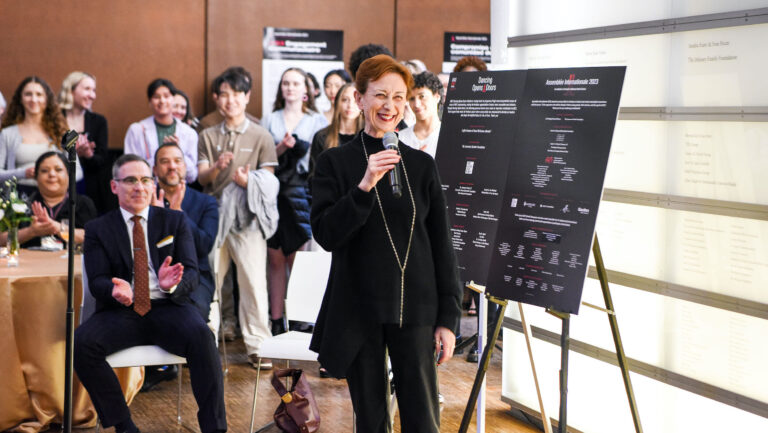
Even dancers who love their isolations and hip rolls might be totally unaware of where jazz dance comes from.
Uprooted: The Journey of Jazz Dance, which premieres at the Dance on Camera Festival on Sunday, July 19, aims to change that. Directed by Khadifa Wong and produced by Lisa Donmall-Reeve, the feature-length documentary is a fascinating deep dive into the complex history and evolution of jazz dance. It features mesmerizing footage and boasts interviews from renowned experts like Chita Rivera, Debbie Allen and Andy Blankenbuehler.
In advance of the premiere, Wong took us through seven key takeaways from the film that may surprise you:
The history of jazz dance is rooted in American history.
“When people look at jazz dance, they don’t analyze it in the way they analyze ballet, or try to put it in historical context,” says Wong. Often, jazz dance is only seen as entertainment and not intellectualized as a reflection of society. But in reality, it was created and shaped in response to America’s political history.
Pattin’ juba was a foundation of jazz dance.
The pattin’ juba was a social dance brought by Africans to America during the transatlantic slave trade. They danced it in response to the clapping of other dancers and would pat the body as if it were a large drum. It featured elements we now recognize as jazz dance, like improvisation, exploration of rhythm, shuffle steps and playfulness. The film gives us a captivating clip of choreographer Camille A. Brown demonstrating what this dance may have looked like.
The cakewalk laid the groundwork for Broadway dance.
The cakewalk began as a social dance on plantations where African slaves made fun of the grandeur of European court dances. It was a satirical and joyful expression for an otherwise oppressed people and was later incorporated into minstrel and vaudeville shows around New York City. This changed the fabric of theatrical dance in America.
Wong believes we should teach these origins in dance schools to ensure there is an awareness of where jazz movement comes from. “I like that people have taken it and added to it and made it their own. What I don’t like is appropriation—we need to acknowledge where it came from,” she says.
The Savoy Ballroom changed Broadway.
In 1926, the Savoy Ballroom in Harlem became the first integrated public space in the United States, allowing African Americans to share the dances of their communities with the wider public. Accompanied by the big bands of the swing era, they danced the charleston, jitterbug, lindy hop and all the dances that make us think of early jazz. By the 1930s, the choreography on Broadway resembled the dances from the Savoy and other ballrooms.
Tap dance grew out of oppression and struggle.
Most of us know that tap dance was instrumental in the development of jazz dance. But the film recognizes that it came out of oppression and struggle. Tap dance originated from the percussive interplay between African juba and traditional Irish jig dances. Master Juba (who was born William Henry Lane), is credited with being the “father of tap dance” for popularizing these dances and performing them in minstrel shows.
Wong explains that before she learned and contextualized the African roots of tap and jazz dance, she didn’t feel welcome in these styles. “I didn’t realize that they were the closest aligned with my heritage and my culture and my history because that’s not what was taught to me,” she says. This is why she believes we should treat African dance the same way we treat ballet—as a foundational technique.
Some classic hip hop steps come from 1920s jazz.
Jazz dance has a complicated history and has evolved into many hybrids. The film shows how even hip hop is a derivative of jazz dance and moves like “head spins” and “flares” were performed throughout the 1920s jazz era as comedic dance.
Jazz was codified by those who had access to legal systems.
Throughout the 1940s and 50s, jazz became codified, giving us the techniques we know and love today from people like Matt Mattox, Luigi, Gus Giordano and Bob Fosse. The film explains that Black choreographers could not benefit from this because they were denied access to courts of law and legal systems at the time.
The film asks us to become curious about the people we don’t know. It highlights African Americans like Pepsi Bethel, JoJo Smith and Fred Benjamin, who made enormous contributions to jazz dance but are often overlooked in favor of the white choreographers who got famous for codifying their styles. “I think it’s going to change now,” says Wong. “The world is showing there is a hunger for appreciation and learning and truth.”




